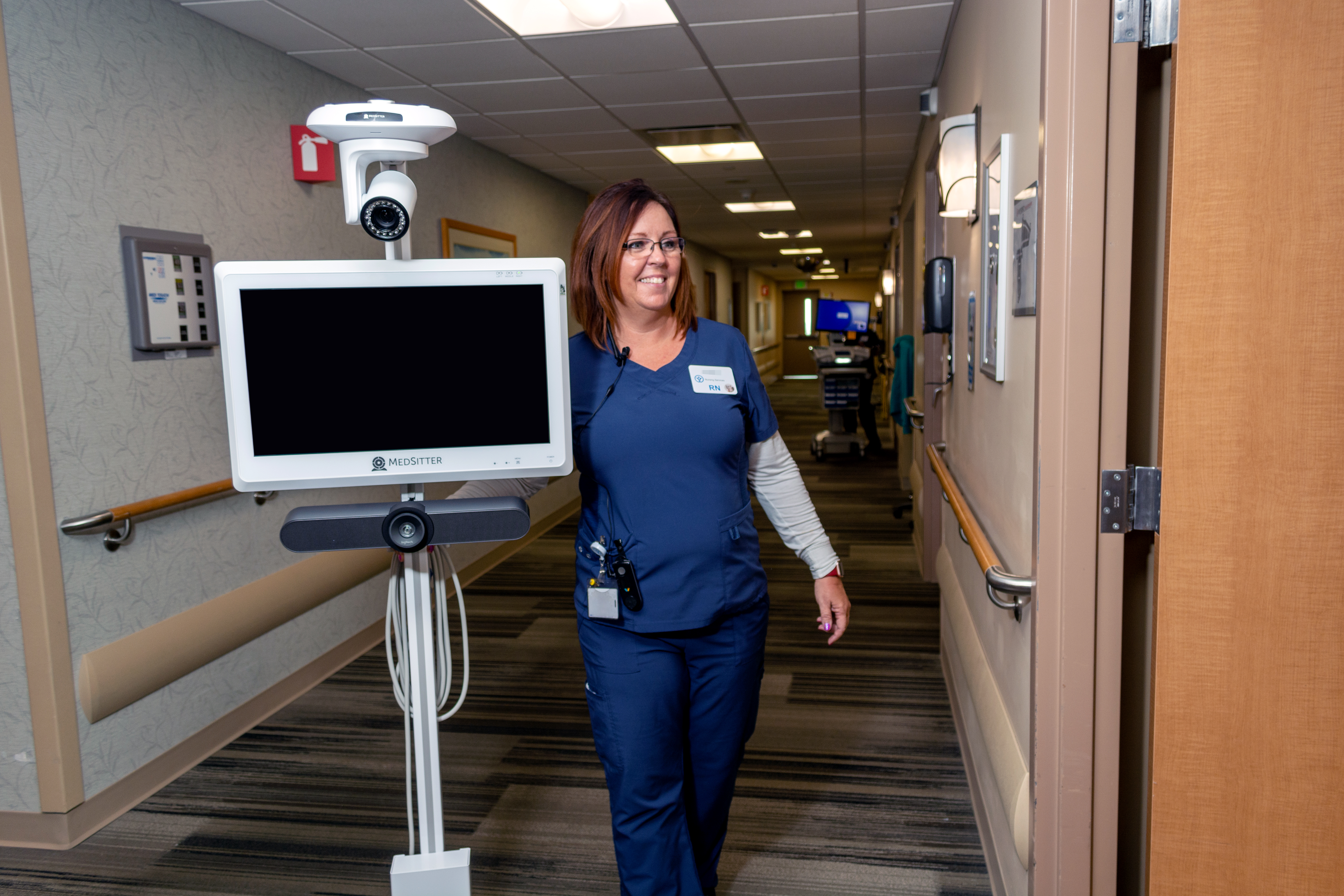MedSitter was designed to be a Win for everyone involved: patients, staff, and hospital administration. Here we analyze just how MedSitter creates a Win, Win, Win situation.
Patient safety is a major priority for patients, patient care staff, and hospital administration. Patient observers can be used to help keep patients safe during their stay, but staffing and budgetary limitations make 1:1 observation difficult to maintain. Remote patient observation marries efficiency with conscious care so that at-risk patients are never left alone, nursing staff is not stretched too thin, and hospitals avoid costly accidents.
How MedSitter is a Win for Patients
The mental burden of any illness or injury that requires hospitalization is intense – and studies have shown that anxiety and depression plague patient families as well. (Source: OJM International Journal of Medicine). Patients in isolation are particularly vulnerable to feelings of depression, anxiety, and anger. (Source: NCBI). The incredibly infectious nature of COVID-19 and its variants have led to an increase in patients who require isolation to keep other patients and staff members safe. Fortunately, the MedSitter remote patient observation system has allowed clinicians to check-in on patients without risking exposure to infectious disease. This has gone a long way towards improving the mental well-being of patients in isolation.
A safe hospital stay is a reasonable expectation of every patient. No one enters a hospital expecting to sustain further injury. That being said, both intrinsic and extrinsic factors can lead to patient falls. Investments in remote observation technology, such as MedSitter’s Virtual Patient Observation Solution, is proving to reduce patient harm which leads to better patient outcomes. MedSitter represents angelfish because just as angelfish never travel alone, with an observer, a patient is never truly alone. If a patient enters a dangerous situation, an observer is there to redirect them or alert onsite medical staff.
How MedSitter is a Win for Staff
When it comes to preventing adverse outcomes for patients, nurses are on the frontlines and often bear the responsibility for keeping patients safe. Patient observation programs are often managed by nursing departments. With budgetary constraints minimizing the number of nurses hired each year, the nursing staff of hospitals are experiencing a greater strain than ever, particularly since the onset of the Covid-19 pandemic. Even without the threat of this virus, hospital clinical staff – and nurses in particular – find themselves grappling with increased numbers of patient falls simply because there are too many patients for one nurse to keep an eye on. Needless to say, nursing departments are stretched to their absolute limit.
A remote observation solution can turn one patient observer into ten. One observer at a command station can effectively monitor multiple patients at once, thus extending staff resources without sacrificing patient safety. The extra sets of eyes are supporting nurses who have been struggling with fatigue by relieving them of the need to be in two or more places at once. MedSitter also provides supplemental staffing for hospitals under intense staff pressure with MedSitter+ Staff. With MedSitter+ Staff, patients in hospitals across the nation can be connected to trained MedSitter employees for observation. MedSitter was created with real-world clinical issues in mind. By supporting both patient safety and nursing units under staffing pressure, MedSitter goes a long way towards improving the inpatient experience for everyone involved.
How MedSitter is a Win for Healthcare Administration
The financial impact of remote patient observers can be incredibly substantial. Simply putting an observer in charge of multiple patients saves in payroll, tax, management, and worker’s compensation expenses, but the real financial impact comes from adverse patient events that remote observers prevent entirely.
Falls have been deemed a “never event” by the Centers for Medicare & Medicaid Services (Source: Agency for Healthcare Research Quality), which means that reimbursement for patient falls is severely limited. When a patient falls in a hospital and sustains injury, it extends the length of that patient’s stay by 6.3 days on average and costs the hospital $14,000 on average (Source: Joint Commission Center for Transforming Healthcare). One avoided fall from an observer that is being leveraged to watch multiple patients can pay for the entire remote patient observation system. MedSitter does exactly that. MedSitter saves administration thousands by preventing falls before they happen, while also protecting patients.
If you are interested in installing MedSitter in your facility, Contact Us today.

